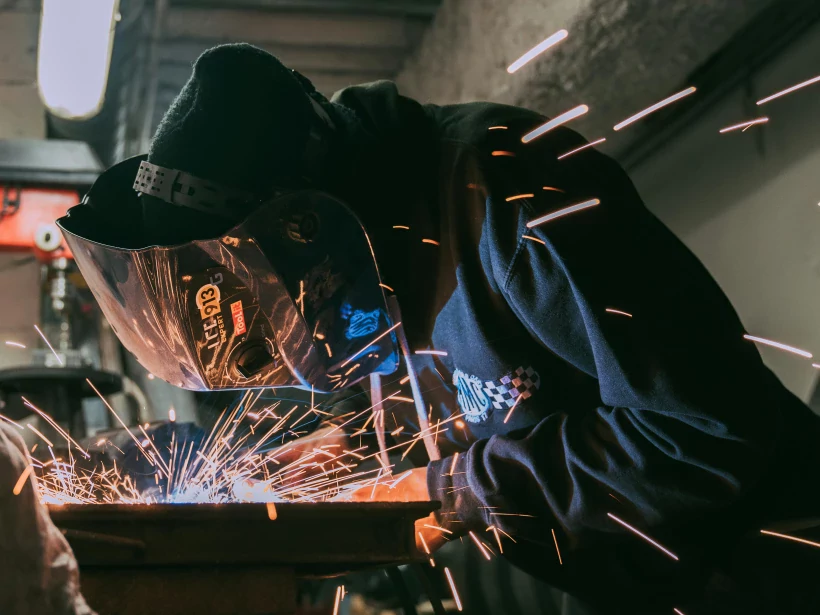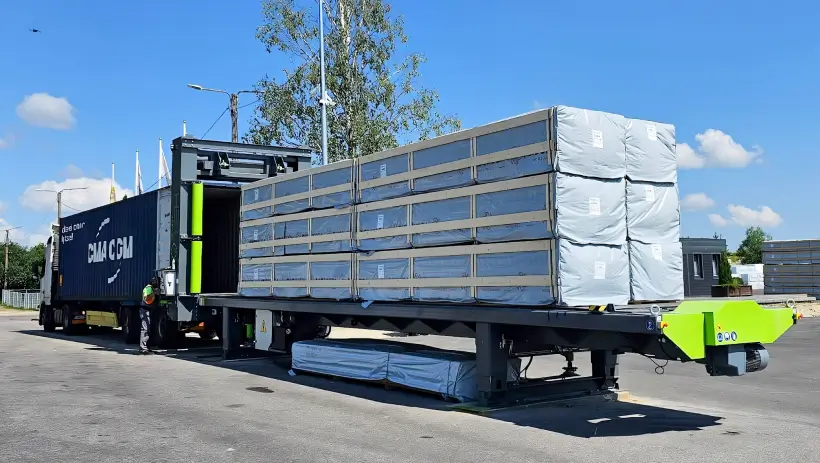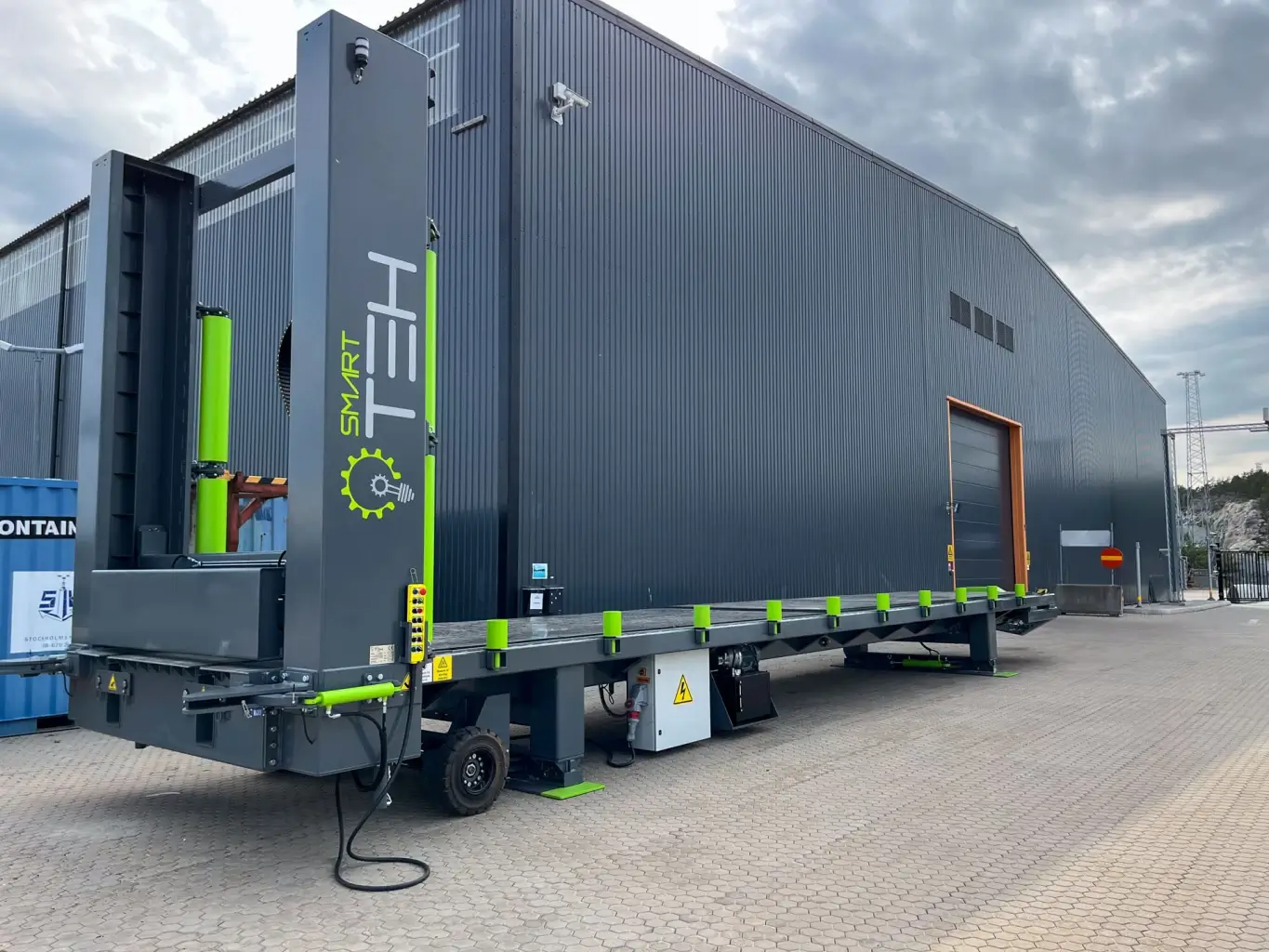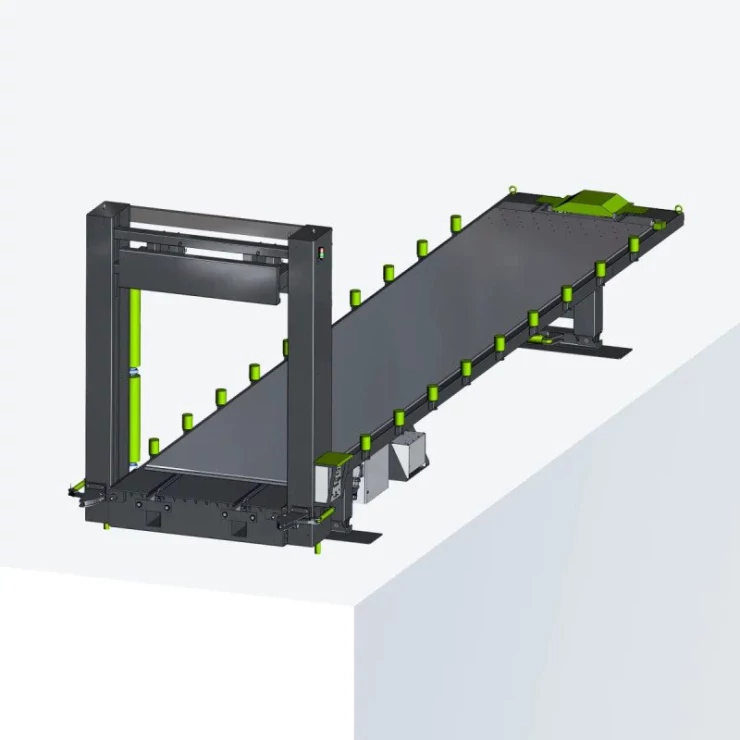
Running a manufacturing business isn’t cheap—rising material costs, unexpected downtime, and inefficient workflows can quickly eat into your profits. But here’s the good news: small, strategic changes can lead to significant savings without sacrificing quality or productivity.
In this guide, we’re diving into 11 cost-cutting strategies designed to eliminate inefficiencies, reduce waste, and make your operations run smoother. Whether you’re looking for quick wins or long-term solutions, there’s something here for every manufacturing business. Let’s get started.

1. Develop a strategic plan
A solid strategy isn’t just a nice-to-have—it’s the backbone of a cost-efficient manufacturing business. Without a clear plan, resources can be misallocated, priorities can get muddled, and cost-saving opportunities might slip through the cracks.
Start by taking a deep dive into your current operations with a SWOT analysis.
Pinpoint Strengths to build on, Weaknesses to address, possible Opportunities and external factors that could impact your business (Threats).
From there, define long-term goals that align with your company’s vision and set measurable targets to track progress.
But here’s the key: flexibility. Market trends shift, regulations change, and new technology emerges. Your plan should be adaptable enough to keep up. Regularly review and refine your strategy to ensure it stays relevant and effective.
Here's how to kickstart the process:
- Conduct a SWOT analysis
- Define long-term goals and cost-saving priorities
- Allocate resources based on strategic objectives
- Identify potential areas for cost reduction
- Ensure flexibility to adapt to market and technology changes
- Regularly review and update the plan
With a strategic plan, manufacturing companies can optimize their processes, reduce waste, and ultimately improve their bottom line.

2. Introduce continuous improvement practices
You can systematically start to eliminate inefficiencies and improve operations by integrating practices like lean manufacturing, Six Sigma, and Kaizen techniques.
These methodologies focus on streamlining processes, reducing waste, and improving quality, ultimately leading to cost savings and increased productivity.
Start by documenting a Standard Operating Procedure (SOP). This will guide employees in developing complex work routines and ensure consistency in operations.
Certification under international standards, such as ISO, environmental, and product safety standards, can further bolster your company's credibility and operational efficiency.
Here’s an overview of your improvement practices:
- Embrace lean manufacturing principles to minimize waste and maximize value.
- Implement Six Sigma methodologies to reduce defects and improve process quality.
- Adopt Kaizen techniques to foster a culture of ongoing improvement and innovation.
- Develop and document SOPs to standardize processes and enhance efficiency.
- Pursue relevant certifications to align with global standards and improve competitiveness.
- Regularly assess and refine improvement practices to adapt to changing industry demands.
Regarding fostering a fantastic work environment, let's talk about your team.

3. Involve your team in the life of the company
Your employees are on the front lines of your business, and they often have firsthand insights into inefficiencies and potential improvements that leadership might overlook. By actively involving them in decision-making and problem-solving, you can uncover cost-saving opportunities while fostering a culture of collaboration and innovation.
Create an open dialogue
Encourage employees to share their ideas by creating a culture of open communication. Regular brainstorming sessions, suggestion boxes, and team meetings give staff a platform to voice their insights.
Recognize and reward innovative ideas that lead to tangible results—when employees see their contributions making an impact, they’re more likely to stay engaged.
Celebrate your team's achievements
Recognition goes a long way in maintaining motivation. Make it a habit to celebrate team achievements and individual contributions:
- Host informal monthly or quarterly gatherings to acknowledge successes.
- Highlight accomplishments in internal bulletins to showcase their impact.
- Offer bonuses or days off.
This way you can create a collaborative environment that drives continuous improvement and cost savings, ultimately improving employee satisfaction and business performance.

4. Develop performance indicators and track progress
A manufacturing company that isn’t measuring performance is flying blind. To drive efficiency and long-term success, you need clear, actionable performance indicators that keep your team focused on continuous improvement.
Define the right KPIs
Start by identifying Key Performance Indicators (KPIs) that align with your business goals and directly impact your operations. These could include production efficiency, defect rates, cost savings, or customer satisfaction scores.
The key is to make them SMART—specific, measurable, achievable, relevant, and time-bound—so your team has clear targets to aim for.
Integrate departmental and interdepartmental indicators
For real impact, don’t just set isolated KPIs for individual teams. Instead, integrate departmental and cross-departmental indicators to encourage collaboration and alignment. When everyone is working toward shared objectives, efficiency improves, and silos break down.
Track, analyze, and adapt
KPIs are only useful if they’re regularly monitored. Use data analytics and reporting tools to assess progress, identify bottlenecks, and spot opportunities for improvement. If something isn’t working, adjust your approach—your KPIs should evolve with your business.
Encourage a feedback-driven culture
An open feedback loop fosters innovation and ensures that improvements aren’t just dictated from the top down but shaped by real-world experience.

5. Specialize in your business and outsource the rest
Focus on your core competencies and outsourcing non-essential activities. This approach allows you to concentrate on what you do best, while leveraging the expertise of specialized companies for other tasks.
Double down on your core competencies
What sets your company apart? Identify the key activities that drive value and give you a competitive edge—whether it’s precision manufacturing, product innovation, or operational excellence. Prioritize these strengths and refine them to stay ahead.
Outsource non-essential functions
Some tasks are necessary but don’t directly contribute to your core business. Instead of stretching your team thin, partner with experts who can handle these functions more efficiently and cost-effectively.
Consider outsourcing:
- Transportation and distribution: let logistics specialists handle shipping, route optimization, and container management for seamless deliveries.
- Maintenance of specific machinery: reduce downtime and extend equipment lifespan with specialized repair and servicing.
- Cleaning services: maintain a safe, hygienic workspace with professional cleaning teams.
- Building maintenance: facility management companies can take care of repairs and upkeep, so you don’t have to.
- Consulting services: get expert insights on areas like conveyor systems, industrial engineering, and process optimization.
- Foreign trade and compliance: trade professionals can help you navigate regulations and streamline global operations.
- Specialized labor: certain tasks, like steel pipe processing or utility pole handling, require niche skills—outsource to professionals who excel in these areas.

6. Review labor costs and manufacturing overhead (MOH)
In the manufacturing industry, labor costs and manufacturing overhead (MOH) are significant contributors to overall expenses. Regularly reviewing and managing these costs can lead to substantial savings and improved profitability.
Assess labor costs
Start by analyzing your current labor expenses. Where can you make adjustments without affecting productivity? Cross-training employees to handle multiple roles boosts flexibility and reduces the need for extra hires. Also, ensure your staffing levels align with production demands to prevent overstaffing or unnecessary overtime.
Manage manufacturing overhead
Manufacturing overhead includes indirect costs such as utilities, equipment maintenance, and facility expenses. Regularly review these costs to identify areas for potential savings. Implement energy-efficient practices and technologies to reduce utility expenses. Also, consider preventive maintenance strategies to extend equipment lifespan and prevent costly breakdowns.
7. Reduce material costs
Material costs can take a serious bite out of your budget, but cutting corners isn’t the answer. Instead, smart sourcing, waste reduction, and better inventory management can help you save money without sacrificing quality. Here’s how:
Rethink your suppliers
Are you getting the best deal? If you’ve been working with the same suppliers for years, it might be time to renegotiate. Compare prices, explore bulk discounts, and consider working with multiple vendors to keep costs competitive. A little supplier diversification can go a long way.
Implement efficient inventory management
Excess stock ties up cash and racks up storage costs. Implement just-in-time (JIT) inventory management to keep materials flowing in only when you need them. With the right inventory software, you can track stock levels, predict demand, and optimize ordering to avoid overstocking.
Minimize waste in production
Scrap and excess materials = lost money. Conduct a production audit to spot inefficiencies, then apply lean manufacturing principles to reduce waste. Encourage your team to share cost-saving ideas—sometimes, the best solutions come from the people on the floor.
Make every material count
Are you using materials efficiently? Small design tweaks can lead to big savings. Optimize product designs, explore alternative materials, and audit your production process to eliminate unnecessary waste without compromising quality.
Improve material flow
The way you handle materials can impact your costs. Improve internal logistics by optimizing storage layouts, streamlining workflows, and reducing unnecessary handling. Less movement means fewer losses and a smoother production cycle.

8. Cut down energy losses
Energy costs can sneak up fast in manufacturing, but a few smart upgrades can lower your bills and boost sustainability at the same time. Let’s talk about where you might be wasting energy—and how to fix it.
Start with an energy audit
Before making changes, figure out where your energy is actually going. An energy audit helps you spot inefficiencies in everything from machinery to HVAC systems. Once you know what’s draining power, you can take steps to cut down waste.
Upgrade to energy-efficient equipment
Old, outdated machines? They could be costing you more than you think. Investing in energy-efficient equipment helps you use less power without sacrificing productivity. Bonus: newer models often come with smart features that help you monitor and optimize usage.
Get smart about energy management
A smart energy management system gives you real-time insights into your power consumption. This means you can track usage patterns, make informed adjustments, and stop wasting energy where you don’t need it.
Insulate and seal your facility
Poor insulation leads to major energy losses. Sealing up walls, roofs, windows, and doors keeps temperatures stable, reducing the need for excessive heating or cooling.
Explore renewable energy options
Looking for a long-term solution? Solar panels or wind power might be worth the investment. While the upfront costs can be steep, they pay off in the long run with lower energy bills and a reduced carbon footprint.
9. Implement preventive maintenance
Preventive maintenance involves regularly checking and servicing equipment. Instead of waiting for things to break down, companies can catch issues early, saving money on expensive repairs and avoiding unexpected downtime. This proactive approach keeps machinery running smoothly and helps production stay efficient.
Key components of a preventive maintenance plan
To establish an effective preventive maintenance strategy, consider the following steps:
- Schedule routine checkups: map out a maintenance calendar based on manufacturer guidelines and past performance data. Consistency is key!
- Train your team: make sure your maintenance crew knows the ins and outs of equipment care. Ongoing training keeps them sharp and ready to spot issues before they escalate.
- Use smart monitoring tools: predictive maintenance tech—like infrared cameras and vibration analysis—helps catch early warning signs before they turn into costly breakdowns.
- Keep track of maintenance history: detailed records of inspections, repairs, and part replacements help you spot patterns and make better maintenance decisions.
- Stock essential spare parts: having backup parts on hand means quick fixes and less downtime when repairs are needed.
Why it pays off
- Reduced downtime: fewer unexpected breakdowns lead to consistent output and productivity.
- Cost savings: regular maintenance lowers repair costs and extends equipment lifespan, reducing the need for replacements.
- Improved safety: ensures machinery operates safely, enhancing workplace safety.
- Better efficiency: reliable equipment keeps production running at peak performance.
At the end of the day, preventive maintenance isn’t just about fixing things—it’s about keeping your entire operation efficient and cost-effective. Stay proactive.

10. Invest in machinery and equipment
If you want your manufacturing business to run like a well-oiled machine (literally), investing in the right equipment isn’t just a nice-to-have—it’s essential.
Ditch the dinosaurs
Let’s be real—outdated equipment is a money pit. Frequent breakdowns, sluggish production, and soaring maintenance costs can quietly eat away at your profits. Upgrading to modern, high-performance machines means fewer headaches, less downtime, and a serious boost in production efficiency.
Crunch the numbers: ROI is king
Before you commit to any big purchase, run the numbers. A thorough Return on Investment (ROI) analysis helps you see beyond the price tag.
Will this new machine increase production capacity? Cut material waste? Reduce labor costs? Improve product quality?Make the operations more efficient? These are the factors that determine whether your investment will actually make or break your bottom line. The goal here is to make more money in the long run.
Focus on automation and technology
Automation is a game-changer for manufacturing businesses of all sizes. Automated systems can handle repetitive tasks with precision, reduce human error, and free up your team for higher-value work. Even better? Smart technology like IoT (Internet of Things) and AI-driven predictive maintenance can help you prevent costly breakdowns before they happen.
Improve material handling and logistics
Even the best machines won’t do much good if materials and products aren’t moving right. Investing in equipment like conveyor systems, forklifts, truck or container loading systems, and automated storage solutions can cut down on wasted time and improve overall workflow.
If your business involves complex transport or container handling operations, this step is even more crucial. Smooth logistics mean fewer bottlenecks, faster turnarounds, and happier customers.

Automatic container loading system
11. Improve your reception and dispatch processes
Your reception and dispatch processes are prime territory for improvement. Think about it—every delay, inefficiency, or miscommunication in your logistics chain isn’t just an inconvenience; it’s money slipping through the cracks.
By tightening up these processes, you can save on labor, minimize errors, and ensure your goods reach customers exactly when and how they should. Here’s how to make it happen.
Optimize loading and unloading procedures
Time is money, and nowhere is that truer than in logistics. If loading and unloading eat up too many work hours, it’s time for a smarter system. Enter automated container loading solutions, like the SmartTEH's Container Loading System.
Instead of relying on manual labor to shift heavy cargo, this system gets the job done in minutes, maximizing truck space and reducing turnaround times. The result? Fewer bottlenecks, lower labor costs, and a safer work environment.
Track shipments like a pro
Real-time tracking technology gives you full visibility into your logistics chain, from the moment goods leave your facility to their arrival at the customer’s doorstep. Advanced tracking systems let you monitor movement, flag delays before they become a problem, and reroute shipments if needed—keeping your deliveries on time and your customers happy.
Cut paperwork hassles with automation
Manual paperwork is slow, error-prone, and frankly, outdated. Switching to electronic data interchange (EDI) systems streamlines document exchange with suppliers, carriers, and customers. Invoices, shipping manifests, and other crucial documents move digitally, reducing mistakes, speeding up processing times, and keeping everything running like clockwork.
Strengthen ties with your logistics partners
Your logistics network is only as strong as the partnerships behind it. Establishing clear, consistent communication with carriers and suppliers ensures everyone is on the same page. Regular updates, performance reviews, and open feedback loops help identify pain points before they escalate, leading to smoother operations and potential cost savings.
Your logistics department is crucial when looking for manufacturing cost-saving ideas. It needs to streamline logistics operations. It guarantees the goods arrive on time and in safe conditions to your clients.
SmartTEH SmartTEH Container Loading System is a solution for large industries in pursuit of efficiency. In a matter of minutes, you can load a container and free the trucks.
Your checklist
To summarize here's a list of all that we talked about.
- Identify strengths, weaknesses, opportunities, and threats.
- Use insights to inform strategic planning.
- Set clear, measurable objectives aligned with your vision.
- Prioritize initiatives for cost-saving and efficiency.
- Distribute resources based on strategic objectives.
- Ensure optimal use of assets and manpower.
- Analyze operations to pinpoint waste and inefficiencies.
- Implement targeted cost-saving measures.
- Adapt to market changes and technological advancements.
- Regularly review and update plans for relevance. Implement lean manufacturing, Six Sigma, and Kaizen.
- Develop SOPs and pursue relevant certifications.
- Foster open communication and involve employees in decision-making.
- Recognize and reward innovative cost-saving solutions.
- Set SMART KPIs that align with business goals.
- Monitor progress and adjust strategies as needed.
- Focus on core business activities; outsource non-essential functions.
- Evaluate outsourcing opportunities for cost efficiency.
- Analyze labor expenses and manufacturing overhead.
- Identify areas for potential savings.
- Negotiate with suppliers and optimize inventory management.
- Explore alternative materials or suppliers.
- Implement energy-saving measures and technologies.
- Conduct regular energy audits.
- Schedule regular maintenance to prevent costly breakdowns.
- Extend equipment lifespan and reduce downtime.
- Upgrade to efficient, modern machinery.
- Consider automation for repetitive tasks.
- Streamline logistics and warehouse operations.
- Improve supply chain efficiency with smart loading systems.
By systematically addressing each area, from strategic planning to logistics optimization, you can ensure that your manufacturing processes are doing their best. Best of luck in your endeavors!




